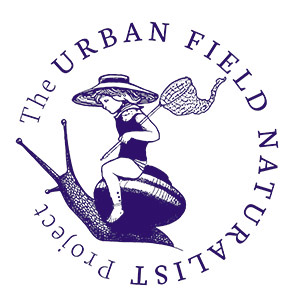
An Owl Limpet’s Garden
Frankie Gerraty

Today’s urban tidepool exploration begins as I kneel next to a patch of barren rock occupied solely by a squat, snail-like creature. She is a female Owl Limpet (Lottia gigantea), with ridges and barnacles texturing the top of her conical, chicken-egg-sized shell.
As I rub my inquisitive fingers along her serrated upper surface, I notice a green hue and slimy texture—a layer of algae, I deduce—growing upon the surrounding rock. The algal layer is arranged in a striking patchwork pattern, as if a miniature lawn mower had been haphazardly dragged across an overgrown, slippery lawn.
A consultation with my intertidal field guide unveils the unique mutualism that created the mysterious texture: The female limpet is an algae gardener. She defends her home territory and maintains a lawn of verdant algae, which she grazes systematically to allow for regrowth and regular harvest. To care for her garden, she secretes a protein and carbohydrate-rich mucus that traps bacteria and serves as a fertilizer for her photosynthetic companions. With careful tending and aggressive territorial defense—in which she “bulldozes” other intertidal critters out of her zone—a limpet can occupy a patch of earth in partnership with her symbiotic allies for up to several years.
In this time of global unraveling, many of us have turned our attentions towards the living spaces (and gardens, for those of us lucky enough to have access to outdoor space) that we occupy. Perhaps Owl Limpets and their symbiotic algae can offer us lessons of care and interdependence, which we might carry into our relationships with the other-than-human companions that we share our living spaces with.



Frankie Gerraty is a biologist and writer based in Santa Cruz, California.